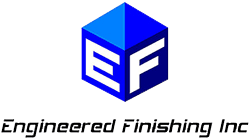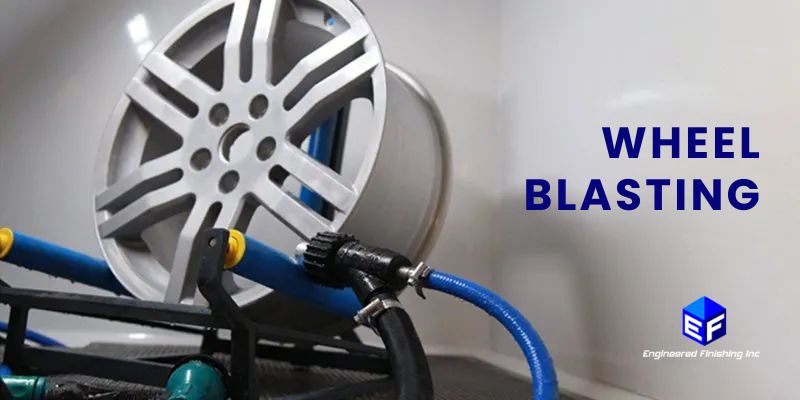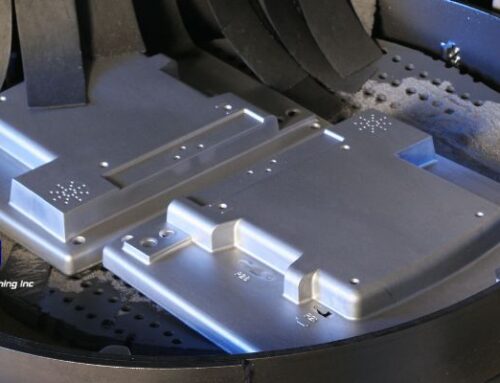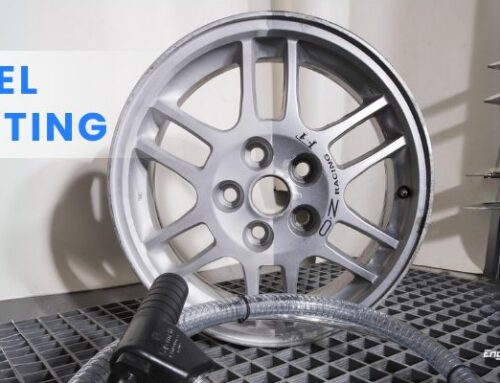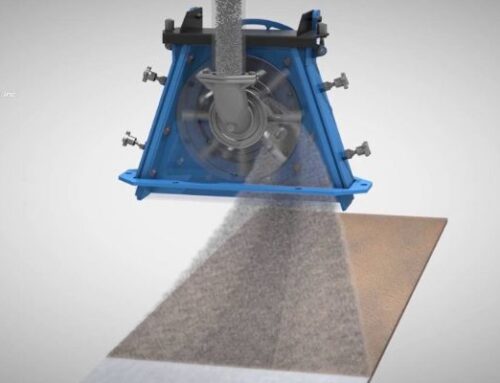In the fast-paced world of industrial manufacturing, efficiency and quality are paramount. As industries strive to meet ever-increasing demands while maintaining high standards, innovative solutions emerge to streamline processes and elevate outcomes. One such solution that has revolutionized industrial surface preparation is wheel blasting—a technique that combines cutting-edge technology with tried-and-tested principles to deliver exceptional results.
Understanding the Dynamics of Wheel Blasting
- Efficient Abrasive Propulsion: Wheel blasting employs rotating wheels equipped with blades or paddles to propel abrasive media at high velocity against the surface.
- Consistent Surface Finish: The controlled and uniform distribution of abrasive media ensures a consistent surface finish, eliminating inconsistencies common in manual methods.
- Versatility Across Industries: From automotive to aerospace, wheel blasting adapts to diverse industrial applications, catering to a wide range of materials and surface types.
Key Benefits of Wheel Blasting
1. Time Efficiency:
Wheel blasting significantly reduces the time required for surface preparation compared to traditional methods. By employing rotating wheels equipped with blades or paddles to propel abrasive media at high velocity, wheel blasting can swiftly remove contaminants, rust, scale, and imperfections from surfaces. This efficiency translates into faster turnaround times for manufacturing processes, allowing industries to meet deadlines and fulfill orders promptly.
2. Enhanced Safety:
Wheel blasting minimizes the need for manual labor and reduces exposure to hazardous chemicals commonly used in other surface preparation methods. Workers are less likely to come into direct contact with abrasive materials or toxic substances, thus mitigating the risk of injuries and health hazards. Additionally, the controlled environment of wheel blasting systems contributes to a safer workplace by containing dust and debris generated during the process.
3. Optimized Material Usage:
One of the key advantages of wheel blasting is its ability to maximize the efficiency of abrasive media. The controlled distribution and recycling of abrasive materials ensure minimal waste, reducing the overall consumption and associated costs. This optimization not only contributes to financial savings but also minimizes the environmental impact by reducing the volume of abrasive media discarded as waste.
4. Precision Surface Profiling:
Wheel blasting allows for precise control over surface roughness, which is essential for applications requiring specific coating adhesion or bonding requirements. By adjusting parameters such as blast pressure, abrasive type, and nozzle angle, operators can achieve the desired surface profile tailored to the needs of the application. This level of precision ensures optimal adhesion and durability of coatings, prolonging the lifespan of finished products.
5. Improved Adhesion:
The surface profile created by wheel blasting provides an ideal substrate for coatings to adhere to. By removing contaminants, oxides, and mill scale, wheel blasting exposes clean metal surfaces with increased surface area, promoting strong mechanical adhesion between the substrate and the coating. This ensures that coatings bond securely to the surface, minimizing the risk of delamination, corrosion, or premature failure.
6. Extended Equipment Lifespan:
Wheel blasting effectively removes corrosion, rust, and other surface defects that can compromise the integrity of industrial equipment and structures. By eliminating these contaminants, wheel blasting helps to preserve the structural integrity and prolong the lifespan of machinery, pipelines, bridges, and other assets. This preventive maintenance approach reduces the need for costly repairs or replacements, resulting in long-term savings for industries.
7. Enhanced Aesthetics:
In addition to functional benefits, wheel blasting also enhances the visual appeal of manufactured goods. By achieving a smooth and uniform surface finish, wheel blasting can transform raw materials into finished products with impeccable aesthetics. Whether it’s automotive components, architectural elements, or consumer goods, the clean and uniform appearance achieved through wheel blasting enhances the overall quality and marketability of the end product.
8. Residue-Free Cleaning:
Wheel blasting ensures the thorough removal of contaminants, residues, and old coatings from surfaces, leaving behind a clean substrate ready for further processing or finishing. Unlike some chemical cleaning methods that may leave behind residues or require additional rinsing, wheel blasting provides a residue-free cleaning solution. This eliminates the risk of undercoating failures or material degradation caused by inadequate surface preparation, ensuring the integrity and performance of the final product.
The Future of Industrial Surface Preparation:
Integration of Automation:
Advancements in robotics and automation are reshaping the landscape of industrial surface preparation. Automated wheel blasting systems, equipped with sensors, actuators, and programmable logic controllers (PLCs), are increasingly being adopted to streamline operations and improve efficiency. These systems can perform tasks such as abrasive media loading, nozzle positioning, and process monitoring with greater precision and consistency than manual operation.
Automation also enables real-time monitoring and adjustment of critical parameters, such as blast pressure, nozzle distance, and media flow rate, to optimize the surface preparation process. By leveraging data analytics and machine learning algorithms, automated systems can analyze performance metrics and identify trends to continuously improve process efficiency and quality control. This integration of automation not only enhances productivity but also reduces the reliance on manual labor, thereby minimizing human error and ensuring safer working conditions.
Environmental Sustainability:
The future of industrial surface preparation is increasingly focused on environmental sustainability and eco-friendly practices. As industries face growing pressure to reduce their carbon footprint and minimize waste generation, there is a growing emphasis on developing sustainable solutions for surface preparation processes.
One aspect of environmental sustainability involves the development and adoption of eco-friendly abrasive media alternatives. Traditional abrasive materials, such as silica sand or coal slag, can pose environmental and health risks due to their composition and disposal requirements. Manufacturers are exploring alternative abrasive media, such as garnet, glass beads, or recycled materials, that offer comparable performance while minimizing environmental impact.
Furthermore, advancements in recycling technologies are enabling the recovery and reuse of abrasive media, reducing the volume of waste generated during surface preparation. By implementing closed-loop recycling systems, industries can significantly reduce their consumption of abrasive media and minimize the environmental impact associated with disposal.
In addition to material considerations, there is a growing emphasis on energy efficiency and resource conservation in industrial surface preparation processes. Manufacturers are exploring energy-efficient equipment designs, optimized process parameters, and renewable energy sources to minimize energy consumption and greenhouse gas emissions. By embracing sustainable practices, industries can reduce their environmental footprint while maintaining high standards of surface preparation quality.
Continuous Innovation:
The future of industrial surface preparation is driven by a culture of continuous innovation and technological advancement. As industries evolve and new challenges emerge, there is a constant need for innovative solutions to improve process efficiency, enhance quality, and address evolving regulatory requirements.
Research and development efforts are focused on exploring new materials, technologies, and methodologies to push the boundaries of surface preparation capabilities. From advanced abrasive formulations to novel surface treatment techniques, researchers are exploring a wide range of innovative approaches to improve surface preparation outcomes.
One area of innovation is the integration of digital technologies, such as Internet of Things (IoT) devices, cloud computing, and artificial intelligence (AI), into surface preparation equipment and processes. By embedding sensors and connectivity features into blasting equipment, manufacturers can collect real-time data on process parameters, equipment performance, and environmental conditions. This data can be analyzed to identify trends, predict equipment failures, and optimize process efficiency in real-time.
Furthermore, AI-driven algorithms can optimize process parameters and automate decision-making processes to improve consistency and quality control. Machine learning models can analyze vast amounts of data to identify patterns, optimize process parameters, and predict optimal blast settings for specific surface preparation applications.
Conclusion:
In conclusion, wheel blasting stands as a testament to the relentless pursuit of excellence in industrial manufacturing. By combining speed, precision, and quality, it has emerged as a cornerstone of modern surface preparation practices, empowering industries to achieve unparalleled productivity and uphold the highest standards of quality. As we look to the future, the journey of innovation continues, promising even greater advancements and possibilities in the realm of industrial surface preparation.


